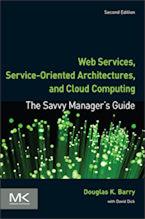J2EE
Java 2 Platform, Enterprise Edition (J2EE) uses a multi-tier distributed model. The J2EE Platform consists of a Web Server and an EJB Server. (These servers are also called "containers.") The Web container provides the runtime environment through components that provide naming context and life cycle management. Some Web servers may also provide additional services such as security and concurrency control. A Web server may work with an EJB server to provide some of those services. A Web server, however, does not need to be located on the same machine as an EJB server. The EJB server provides an environment that supports the execution of applications developed using Enterprise JavaBeans (EJB) components. It manages and coordinates the allocation of resources to the applications. Enterprise beans typically contain the business logic for a J2EE application.
Also, see EJB.
Organization: Java Community Process (JCP)
More information: J2EE page on the Oracle site
Context for J2EE
Related Articles for J2EE
Author
Douglas K Barry
Principal
You may use this material for your work or classes. Reprint Policy. Be sure to check the menu at the left for other articles available on this site.
The Savvy Manager's Guide
Douglas K Barry is also the author of a book that explains Web Services, service-oriented architecture, and Cloud Computing in an easy-to-understand, non-technical manner.
Web Services, Service-Oriented Architectures, and Cloud Computing: The Savvy Manager's Guide (Second Edition)
by Douglas K Barry with David Dick
This is a guide for the savvy manager who wants to capitalize on the wave of change that is occurring with Web Services, service-oriented architecture, and—more recently—Cloud Computing. The changes wrought by these technologies will require both a basic grasp of the technologies and an effective way to deal with how these changes will affect the people who build and use the systems in our organizations. This book covers both issues. Managers at all levels of all organizations must be aware of both the changes that we are now seeing and ways to deal with issues created by those changes.

